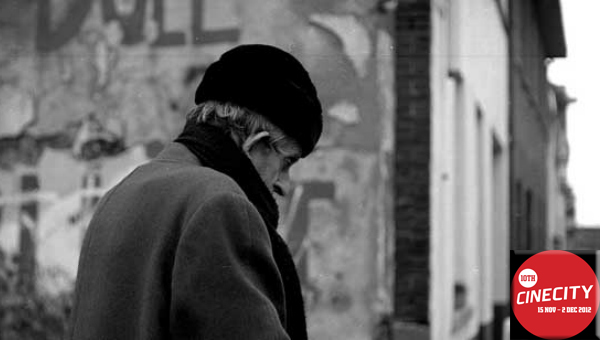
In August of 2008, the Flemish government began the demolition of Doel, a historic village near the Port of Antwerp. This was reportedly to make way for a new dock, named Saeftinghedok, though some doubt that this is the REAL reason behind the bulldozing. Only a handful of people still live in Doel, including Emilienne, a 75 year old woman who, unlike her friends, isn’t in such a rush to up sticks and leave.
Tom Fassaert’s documentary was filmed over 6 years, and chronicles the continued destruction of the village, and Emilienne’s continued efforts to dig in her heels against the threats of bailiffs; all the while declining in health herself. A side story features the village pastor, a very frail man trying to keep what’s left of the community together, as his health rapidly declines. A particularly rum scene features him dressed in the manner of a Russian spy, pedaling really slowly on an exercise bike while Chris Rhea’s “Driving Home for Christmas” crackles away on the radio.
… a proliferation of graffiti that’s confusing in the apparent absence of anyone under the age of 65 …
Much of the film is made up of shots of the abandoned streets of Doel, which could just as well be a grimy little mining town in Yorkshire, with an abandoned building here, half a building there, and a proliferation of graffiti that’s confusing in the apparent absence of anyone under the age of 65. A group of hippy lefty activist squatters takes residence in Doel, marching, waving banners, and generally trying to defend the town (to no avail), and their futile efforts serve only to make the film even more tragic. What comic relief there is comes from the old ladies sitting round Emilienne’s table (they seem to spend an inordinate amount of time shelling peas), and wittering to each other. There are some smiles to be had, but no laughs.
When AN ANGEL IN DOEL starts, we’ve already missed the invasion of the riot police, “encouraging” people to leave their homes, and the credits start to roll just when a channel 4 documentary would be displaying the words “End of Part One”. The film plays like more of a mood piece than an exploration of the story, focusing on Emilienne’s friends gently trying to persuade her to move on, while all around them literally and figuratively crumbles.
httpvh://youtu.be/VPCQe28H6TQ

